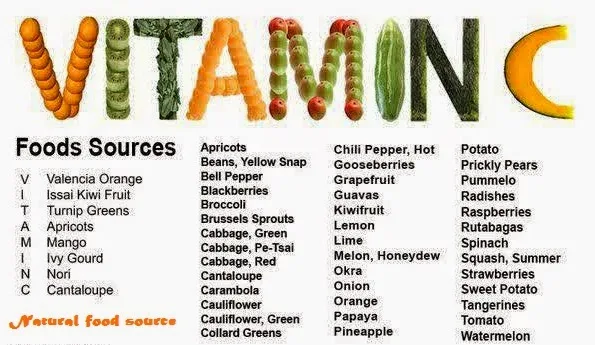How to Navigate Blood Pressure through Vitamin Nutrition. High blood pressure or hypertension is often a serious health concern, and addressing it requires a holistic approach that includes lifestyle changes, including a healthy diet. One approach that can help is enriching the diet with specific vitamins and minerals proven to support cardiovascular health. In this article, we will explore ways to lower blood pressure by harnessing the power of natural nutrients.
The Importance of a Healthy Lifestyle in Lowering Blood Pressure
High blood pressure increases the risk of heart disease, stroke, and other health issues. Therefore, adopting a healthy lifestyle that includes regular physical activity, stress management, and, of course, a good diet is crucial. One aspect often overlooked is the significant role of vitamins and minerals in maintaining blood pressure balance.
1. Potassium: The Unsung Hero
Potassium is a mineral with a central role in regulating blood pressure. It works by balancing the effects of sodium, another mineral often responsible for increased blood pressure. Increasing potassium intake can help counter the negative effects of sodium, control blood pressure, and protect heart health.
Food sources rich in potassium include bananas, avocados, tomatoes, potatoes, and green leafy vegetables. By incorporating these foods into your daily menu, you provide crucial support for optimal cardiovascular function.
2. Calcium and Magnesium: Best Support for Blood Vessels
Calcium, beneficial not only for bones but also in controlling blood pressure, can be obtained from healthy sources such as low-fat dairy products, cheese, and leafy green vegetables, providing significant benefits.
Alongside calcium, magnesium plays a vital role in maintaining blood pressure balance. Foods rich in magnesium include nuts, whole grains, and green leafy vegetables. The optimal combination of calcium and magnesium helps reduce the risk of hypertension.
3. Vitamin D: Shining Bright for Heart Health
Vitamin D, commonly known for bone health, also has a positive impact on the cardiovascular system. Sun exposure remains one natural way to obtain vitamin D. However, if sunlight is insufficient, foods like fatty fish (salmon, tuna), egg yolks, and dairy products can serve as alternative sources.
Vitamin D aids in maintaining blood vessel elasticity and can help reduce blood pressure. Moreover, it is involved in regulating the renin-angiotensin system, playing a role in controlling blood pressure.
4. Vitamin C: Antioxidant for Blood Vessels
Vitamin C not only supports the immune system but also helps maintain the elasticity of blood vessels. Fruits like oranges, strawberries, kiwi, and vegetables such as red peppers are exceptional sources of vitamin C.
5. Coenzyme Q10 (CoQ10): Assisting Heart Performance
Coenzyme Q10, or CoQ10, is a compound naturally produced by the body and plays a crucial role in cellular energy production. CoQ10 supplements or foods like nuts, meat, and tuna can provide additional support for heart health. CoQ10 also acts as an antioxidant, protecting blood vessels from oxidative damage and supporting optimal heart function.
6. Omega-3 Fish Oil: Good Fat for the Heart
Fish oil contains omega-3 fatty acids, proven to have blood pressure-lowering effects. Omega-3 helps reduce inflammation, improves blood vessel function, and maintains blood pressure balance. Adding fatty fish like salmon, mackerel, and sardines to your diet or considering fish oil supplements ensures an adequate intake.
7. Folate (Vitamin B9): Guardian of Blood Vessels
Folate, also known as vitamin B9, helps control homocysteine levels in the blood. Elevated homocysteine can damage blood vessel walls and increase the risk of cardiovascular diseases. Sources of folate include leafy green vegetables, legumes, and whole grains. Ensuring adequate folate intake provides extra support for vascular health.
Important Note: Balance and Professional Consultation
While vitamins and minerals can provide valuable support in lowering blood pressure, it is crucial to understand that there is no magical solution. Effective blood pressure management involves a combination of factors, including a balanced diet, regular exercise, stress management, and regular consultations with healthcare professionals.
Before making significant changes to your diet or starting a supplement program, it is advisable to consult with a doctor or nutritionist. Each person has unique nutritional needs, and excessive intake of certain vitamins or minerals can potentially be harmful.
Conclusion: Empowering Yourself with Wise Food Choices
Lowering blood pressure through natural nutrition is a positive step that can bring long-term benefits to your heart and blood vessels. By incorporating foods rich in potassium, calcium, magnesium, vitamin D, C, CoQ10, omega-3, and folate into your daily diet, you provide your body with powerful tools to maintain blood pressure balance.
It's essential to remember that nutrition is just one part of the overall health picture. Combine these efforts with a generally healthy lifestyle, and do not hesitate to seek professional guidance for your journey towards better health. By choosing food wisely, you not only regulate blood pressure but also empower yourself towards a healthier and more energetic life.


































